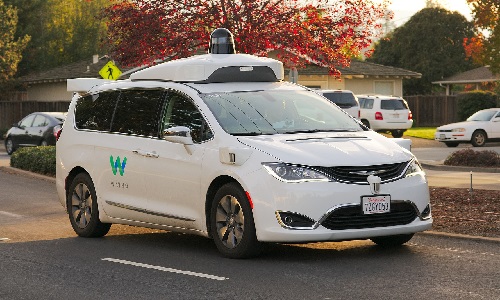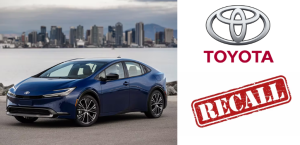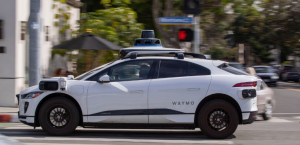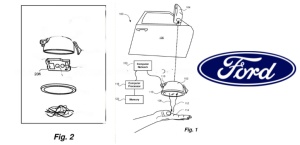Toronto, Ontario — July 23, 2018 — In this weeks AV Report: Travelers releases white paper, reducing commute times by getting rid of stoplights, a realistic (and longer) timeline for AVs, and much, much more!
Travelers Insurance released a white paper this week arguing that auto insurers need to be cut into the revenue stream that AVs will produce. One of the bigger threads in the AV story to this point has been the question of what to do if AVs educe radically the number of auto accidents. If that happens there won’t be as much of a need to insure vehicles. Auto insurers face an existential crisis in the emergence of AVs. According to the Travelers report, there are still significant uncertainties associated with AVs. There will be a period when AVs share the road with conventional cars and unexpected incidents. As a result, there will always be some number of accidents, even if all cars are fully AV. So, “When it comes to insuring AVs, Travelers believes that leveraging the existing automobile insurance structure, both commercial and personal, is the best method for compensating crash victims quickly and efficiently — now and in the future.” that is, the current insurance structure is, “… already designed to adapt to evolving risk environments and would minimize regulatory uncertainty, market disruptions and consumer confusion. Continuing to rely on auto insurance for coverage — regardless of vehicle type — will also help to ensure consistency during the long period in which AVs and driver-operated vehicles share the road.” https://bit.ly/2L8HLc3
A study this week is a perfect example of the hype that has arisen around AVs. According to the study, an impending, “… unprecedented transformation of global industry, autonomous vehicles are about to displace drivers and generate $7 trillion per year by 2050.” Such is the claim contained in a study commissioned by Intel. As a tech company poised to profit off an AV boom Intel has a vested interest in pumping up the hype. So keep that inmind. Whatever the case, a couple of the predictions contained in the report: “Fleets (trucks, buses, taxis, deliveries) likely first movers in autonomy uptake.” Eventually, “… autonomous vehicles will create a massive economic opportunity that will scale from $800 billion in 2035 to $7 trillion by 2050.” The study also claims that, “… greatly enhanced safety, autonomous vehicles will save more than 580,000 lives between 2035 and 2045.”
SoftBank has dropped a massive $121 million investment on a company called Light. The hope is that the start-up may have a technology that is lighter and cheaper than Lidar, the bulky arrray of lasers that help AVs see. According to one report, “Light uses complex algorithms to combine images from multiple camera modules into a single, high-quality image with depth. [Softbank] quickly saw Light’s application in autonomous vehicles as a potential replacement to Lidar, Grannan said. https://bit.ly/2L8HLc3
The latest upgrade to the Tesla Model 3 is a self-parking system called “Summon.” It’s delivered to cars in an over-the-air update. According to the company, “Summon is an aurtonomous-drive feature that allows the car to park itself without anyone having to be inside the car at all.” The system is said to allow a car to slide into a garage space, “… only a small amount wider than the car itself, with no need to worry about whether you can squeeze yourself in or out. Not only that, the system can also operate the garage door as it parks itself and powers down, or when its owner calls it out of its parking space.” Apparently the Tesla Model S and Model X have had the feature for a while now, but Model 3 owners can now download the feature using the, “… over-the-air software updates when the car is connected to the internet,” according to a report. https://bit.ly/2Lk3Xzs
Researchers are Carnegie Mellon University have tested, “… a way of ridding our streets of traffic lights entirely and replacing them with a virtual system instead… Using direct short-range radio systems that are increasingly being built into modern vehicles… a vehicle-to-vehicle communication system that shares data such as GPS coordinates, speed, and direction,” will allow cars to coordinate their movements through intersections. As a result, commute times to be reduced. The results of the Carnegie study are fascinating. The virtual system is said to dramatically improve commuting times. “The results show that [virtual traffic lights] reduce the commute time by more than 20% on routes with unsignalized intersections,” according to a report. “Pedestrians could be included in the protocol using a smartphone app.” https://bit.ly/2NFJrYa
A tech columnist took the time this past week to temper the inflating hype around AVs. According to the scribe, back in 1979 the sccientist Douglas Hofstadter, formulated a useful general rule that applies to all complex tasks. “Hofstadter’s law says that ‘It always takes longer than you expect, even when you take into account Hofstadter’s law,’” according to the column. Applied to the world of AVs, “… changing anything that involves just software — programs — is relatively easy. Once hardware — physical kit – is involved it very quickly gets much harder… if a new technology is going to have critical interactions with humans or public institutions, then Hofstadter’s law will apply in spades.” The columnist suggests taking the most optimistic AV estimates with a grain of salt. “If you believe the hype, you’ll be expecting to see them on our roads any day now. Dream on.” Cars can be programmed to handle most situations on the road. But there are also accidents that are what engineers call “edge cases”, where a, “… cars’ software encountered scenes or objects that it didn’t recognise for the simple reason that they had never appeared in the software’s training datasets. Given that the real world is full of things that cars’ sensors and software have never seen before, these edge cases (and their attendant fatalities) will inevitably continue.” AVs will eventually arrive, initially licensed for carefully circumscribed uses, possibly on designated urban streets and separated from humans driving old-style automobiles or mounted on bicycles, scooters, even pogo sticks. In that sense, the cars will be more like the driverless trains that take you to the departure gates in airports such as Stansted or Singapore’s Changi. That doesn’t mean that driverless cars won’t be useful, maybe even welcome. But if you’re wondering why it might be 2050 before they’re a common sight on every street, then there are two obvious answers. One is that chance and human nature will ensure that the number of conceivable edge cases is very large (if not infinite). The other is that Hofstadter’s law will apply to this technology, just as it applies to everything else,” according to the report. https://bit.ly/2uw054As





































